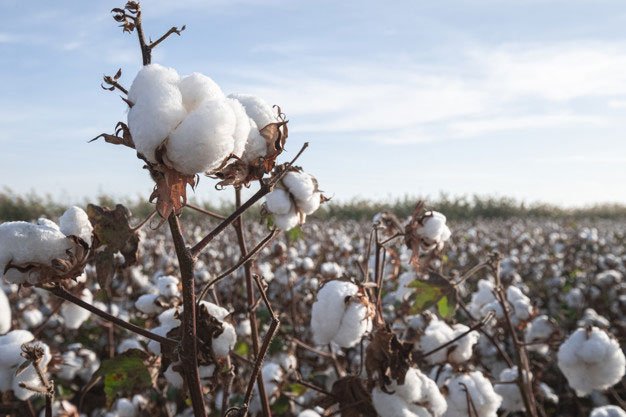Assuming that it’s pretty obvious, the last time you read that word ‘Autotrophs’ was mentioned in your school textbook. It came with the description that how mighty it was for those ‘herbs to rescue’ themselves by doing all their cooking arrangements on their own. Well, we can’t beat that for sure because our physical bodies are not meant to cook food by itself from the skin. That plain sounds are spooky! And hence we rely on the herbs around to do it for us. Be it a meal on our plate or for soothing that perplexed soul inside us that enjoys the aesthetic view of the greens.
Diving deeper into the world of greens, we find that there are multiple reasons that they serve as a reason to rescue us from the daily shackles, and not only that, they may be part of the very next antidote we need. Let’s bring into light, a few ways as to how herbs come to our rescue. Mind if I call the soothing green herbs, shrubs, and trees around your vicinity as ‘Greenies’ instead of that technically sounding ‘Autotrophs’ or something else?
If you have a dress on, you have greens on!
Log on to that site which has the latest trending fashion, and you find the multitude of offers, end-season sales, and eye-catching discounts. But how often have you wondered that the attractive clothes mentioned on Myntra or Flipkart, come from a much-complicated process of extracting them from the green herbs, or rather I should say from the seed part of Cotton (Gossypium sp.) which looks like a fur of the white ball. The gunny bag you flaunt so proudly in groceries is none other than the threads obtained from the plant of Jute (Corchorus sp.).And no, these plants have not come out of anywhere, they have a history.

A history that has migrated them from different parts of the world, delivered finally at your doorsteps. Kapas or Rui (Cotton) finds its way back in the Roman and Greek literature; they have been mentioned in Rig-Veda as well. It was Herodotus who mentioned its use as a textile. India is no doubt the centre of the cotton industry, from where it has been introduced to Egypt and China. The Africans found it with the help of Arab traders.
Now how does a green standing crop in the field find its way to your clothes? That’s another story to tell. The white cotton ball has a cover, called ‘capsules’ that are removed by Ginning, and then packed into big bales by hydraulic press classed as Bailing, the foreign matter from these bales are removed by beating and fluffing i.e. Picking. The lumps from the raw cotton are eliminated through Carding. Short fibres are removed from this by Combing and those fibres are straightened by Drawing. The final product in the form of your clothes, threads, absorbent cotton, water repellent bandages, even fertilizers (in the form oil cake) is available at your service through the extraction of multiple parts of this plant. Such a sigh of relief! What would we do without the Myntra sales?
Jute is ‘the golden fibre’, which is rightly named so because of the musky brown strands. It is important sackcloth that requires prolonged cleaning and fields with ample drainage for its processing. After which it is converted from green to brown – to make its presence felt in the rope, carpets, and jute bags adoring your house as well as rescue you from the trouble of finding a grocery bag every time you step out of the house.

Fruits habituating your aromatic cuisines
Will you believe me if I say that the entire aroma in your food or exotic cuisine comes from the fruits of a green plant? Yes, maybe, or don’t know. But that’s the truth; dried fruits of many tropical plants do make up their way to your kitchens. Also, do you know whether you can eat warty pumpkins? Turns out it is edible. Count the number of dishes in which the followings are present as the core ingredients: Elaichi, Saunf, Jira, Dhania, Laung. And they are the greenies which make up about 70% of what you eat. They are none other than Cardamom (Elattoria cardamomum), Fennel (Foeniculum vulgare), Cumin (Cuminum cyminum), Coriander (Coriandrum sativum), and Cloves (Syzgium aromaticum), respectively. Cultivated widely in India and Sri Lanka; Cardamom or Elaichi is the Queen of Spices. It is the second most important ‘national spice’ of India. It is extensively cultivated in the southern states of Kerala, Karnataka, and Tamil Nadu.

A good yield of this spice is a result of an equally good cultivation practice with 250-300 cm of annual rainfall and well-drained humus-rich loamy soils. They come into bearing only after three years of planting but reach full bearing at the age of seven or eight years. This herb comes to our rescue as a cure for nausea & vomiting, windiness and stomach ache. Need an instant solution for bad smell? Indigestion? Sore throat? Then cardamom and its seeds are there for you.
Next up is Fennel! You may recall it as the sweet coated Saunf at the end of your meal. It is a native of Southern Europe and the Mediterranean region, spread to the countries of India, Russia, Romania, Hungary, Italy, Germany, France, Japan, Argentina, and the United States. In India, it is grown in states of Maharashtra, Gujarat, Karnataka, U.P., Punjab, and Haryana & Rajasthan. Unlike Cardamom, Fennel requires a fairly mild climate for its cultivation as a cold-weather crop. How it rescues us? Oh! Don’t you forget the pleasant aromatic smell of this potted herb? Medically it is useful in infantile colic & flatulence. It can kill that hookworm if there’s one in your stomach.
Same family different profession
And then there are two spices belonging to the same family, Apiaceae, they are Dhania (Coriander), and Jira (Cumin). Coriander is that herb which you can never forget to add as a garnish to the end of your dish, its seeds are carminative, diuretic, stomachic and a tonic; the poultice of which is a great escape from ulcers and carbuncles. Cumin, on the other hand, is the starter that is added in the cooking pot along with oil, to begin the preparations of a dish! It has some uses as that of the former one. Its oils are used for flavouring liquor and cordials, & in perfumes.
In the end, let’s quickly look through this dried unopened floral bud of an evergreen tree i.e. Laung. Clove is one of the most valuable and ancient spices of the orient. It can easily be recognized through its dark red colour which appears like kiln or mat when dried under the sun. Its colour is graded to make sure whether it is worth coming to your rescue. Apart from its aromatic and fine flavour, it has warming qualities. Medically it relieves from dyspepsia and gastric irritation. To top it all, it is one of the ingredients of the famous Paan (betel-nut chew).
Let’s be medical about it, after all, it’s a matter of health
Some diseases are cured by the age-old remedies of your nannies and grandmothers. But what if there are ailments of serious nature. You just cannot cure it with the natural pot herbs. And that’s where comes medicinal herbs to the rescue.
Opium poppy (Papaver somniferum), commonly called as Afim or Pasto, is one such herb. Although infamous for its use amongst drug abusers, it is cultivated for pharmaceutical use. It is native to Asia and indigenous to the Mediterranean. It is a winter crop. And to bring to light its legal uses, let me remind you of the following words from a dark movie: Morphine, Codeine, Noscapine, and Papaverine. All of them are useful as narcotic, sedative, antispasmodic, cough medicine. Morphine allays diarrhea & vomiting, reduces blood pressure & bleeding. Noscapine is used in bronchial asthma & pulmonary emphysema.
Cinchona (Cinchona spp) and Rauwolfia (Rauwolfia serpentine), commonly called Sarpagandha, are some of the other medicinal herbs whose multiple varieties are extracted for drug manufacture. Quinine, sourced from Cinchona, rescues us from malarial fever, spleen enlargement, septic fever & pyemia. You can also find its products as antiseptic in ulcers or as an antipyretic. Various parts of Rauwolfia is a great remedy for nervous and intestinal disorders.

A little Grease is what it requires
Have you ever suffered from dried skin or choppy lips in winters? Do not worry! It is a common phenomenon we all go through. Thankfully, there are two plants cultivated widely across the nation to lubricate our skins. They are the well known Mustard Oil and Coconut Oil. These herbs are not only used for edible purposes, as most of you might be aware of but also for illumination and anointing the body. Their low-grade products are used to manufacture Oil Cakes which rescue us from the hard work of finding feed for the cattle.
There are six species of Mustard( Brassica campestris) which are chiefly grown in China, India, Pakistan, Canada, France, Poland, and Germany. They are autumn crops whose stems are tied into bundles and stacked under the sun for days. This shatters the pods & gives seeds.
Native to coastal areas, Coconut (Cocos nucifera) is nature’s greatest gift to mankind. It is widely grown in the Philippines, Indonesia, India, Mexico, and other countries. Their seedling is raised in nurseries and grows vigorously, and yields fruits within five to seven years. It is the dried endosperm of this plant that gives us our desired product.


Conclusion
I am sure you are filled with a lot of head stuff on various plants and herbs which rescues us in one way or the other. Finding them in the near vicinity is equally overwhelming. But the list doesn’t end here, there are a lot many areas that I have kept untouched – like your cereals and bread, and the morning coffee and tea which you so dearly require. Well, that’s a story for some other time. For now, let’s thank and appreciate the importance of the ‘greenies’ whose stories I narrated to you in this prose.


